
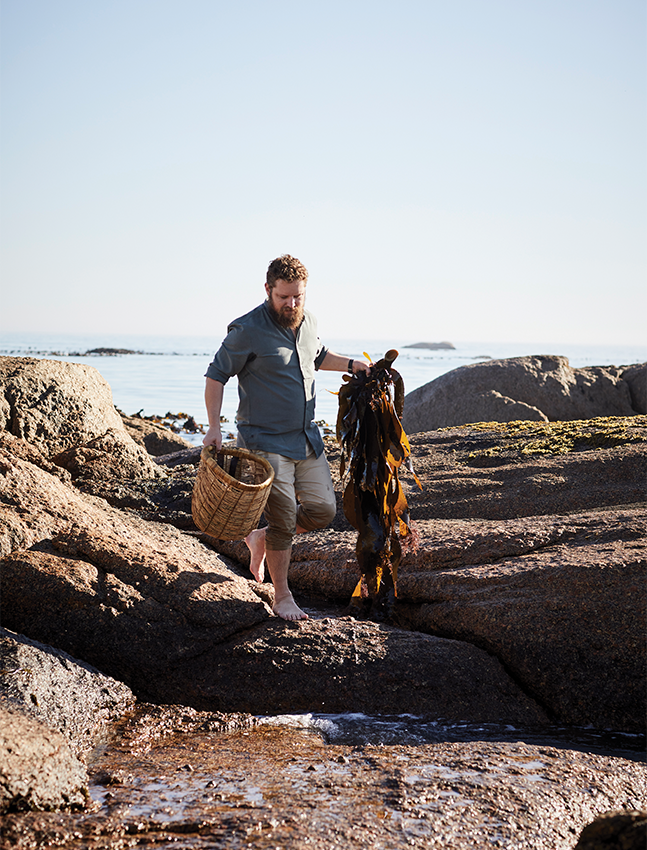

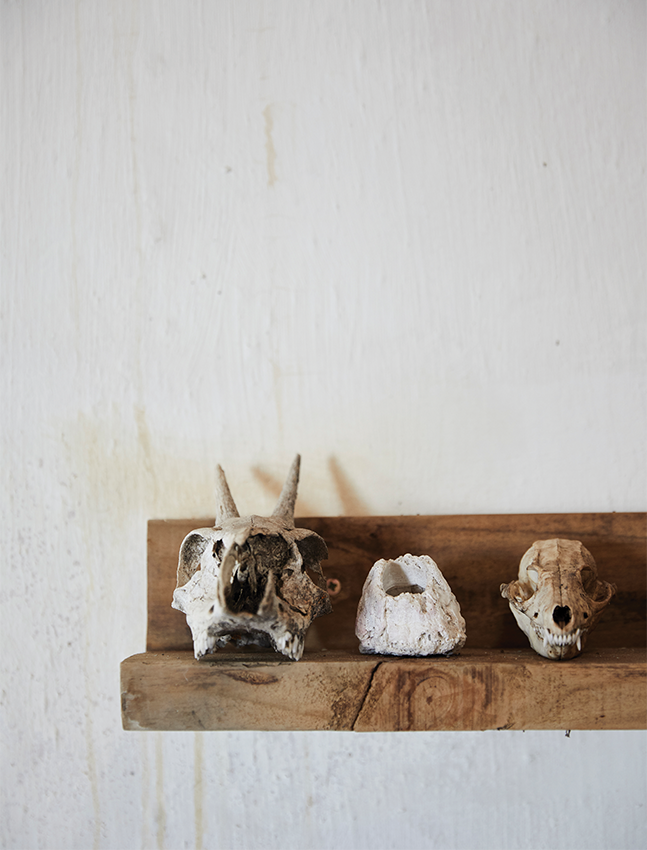
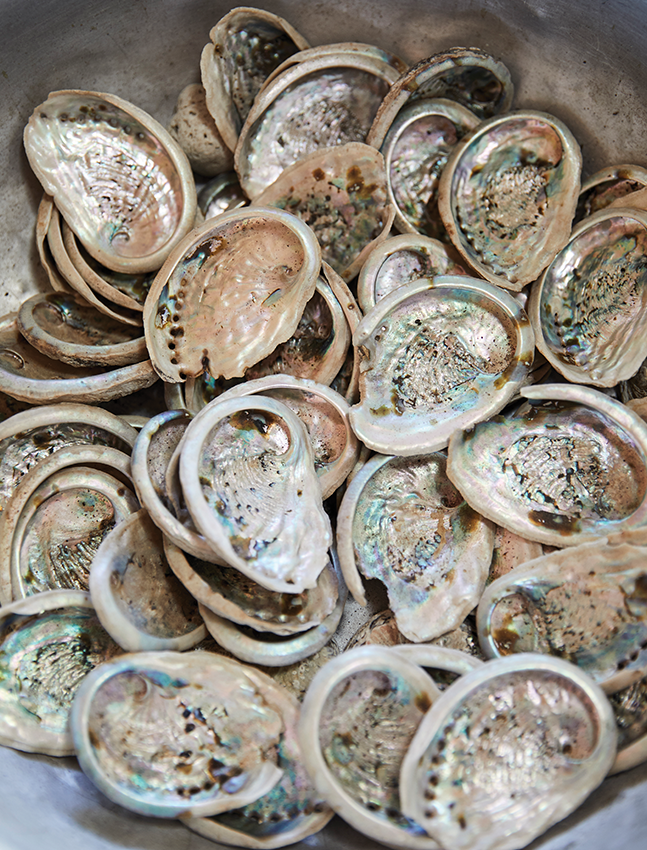
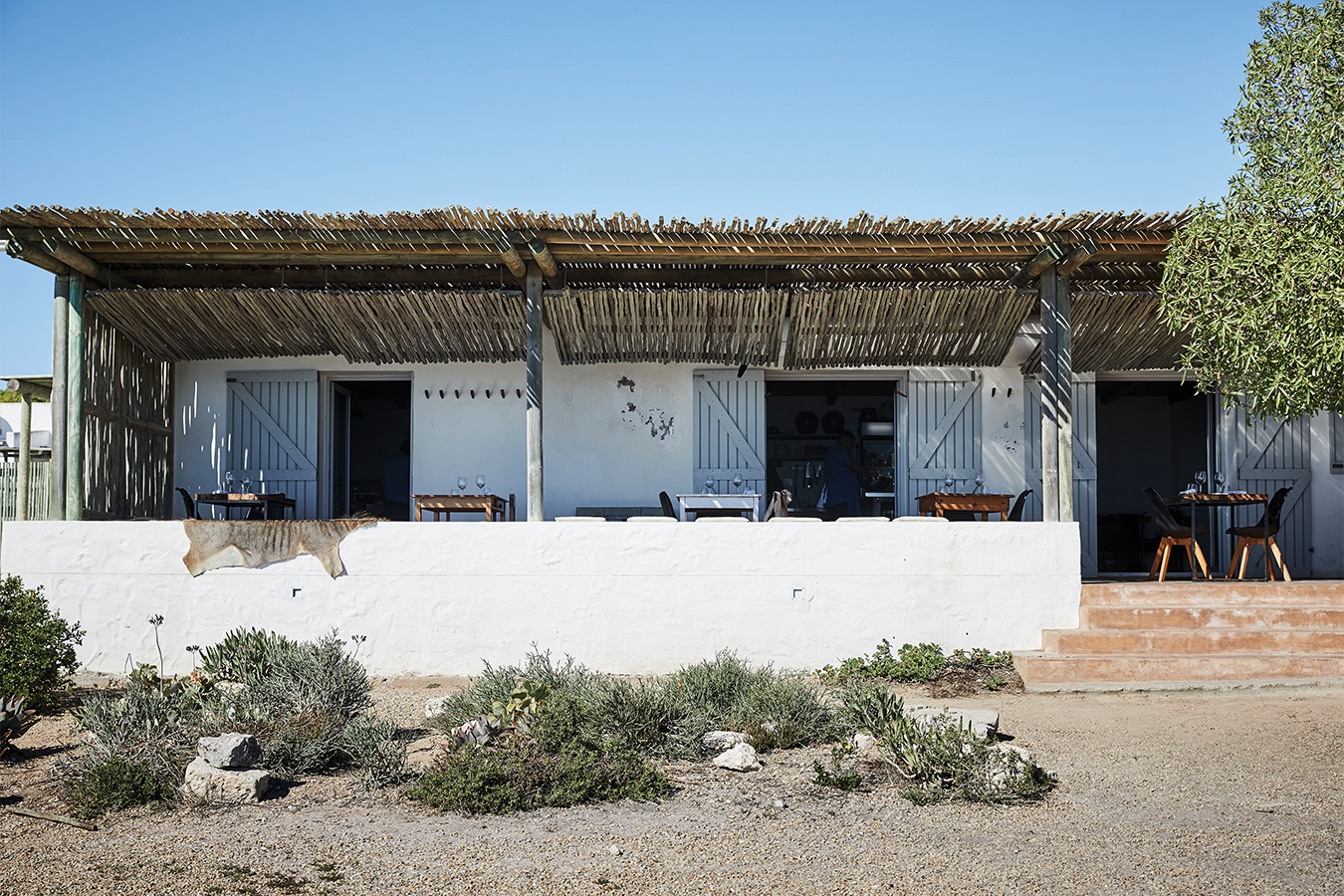
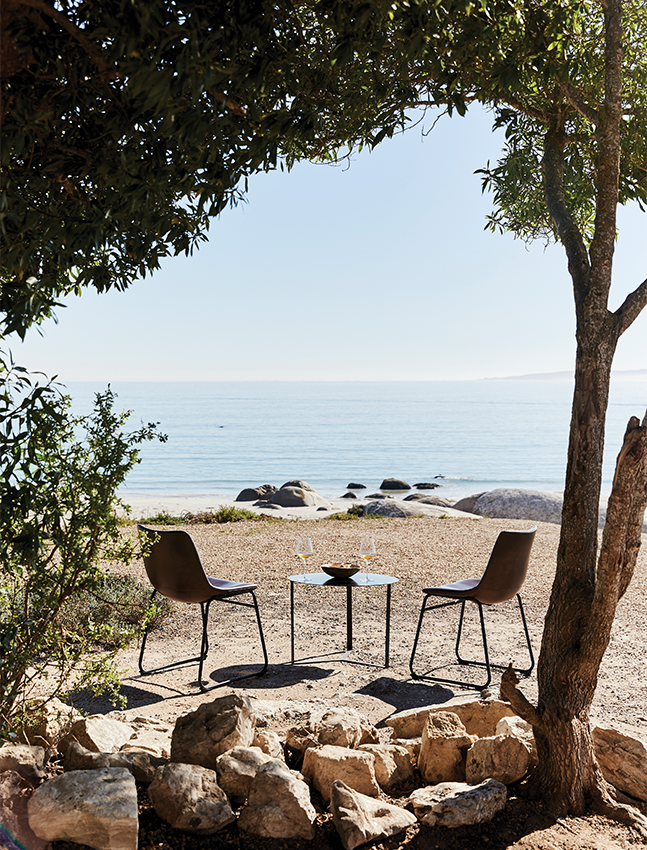
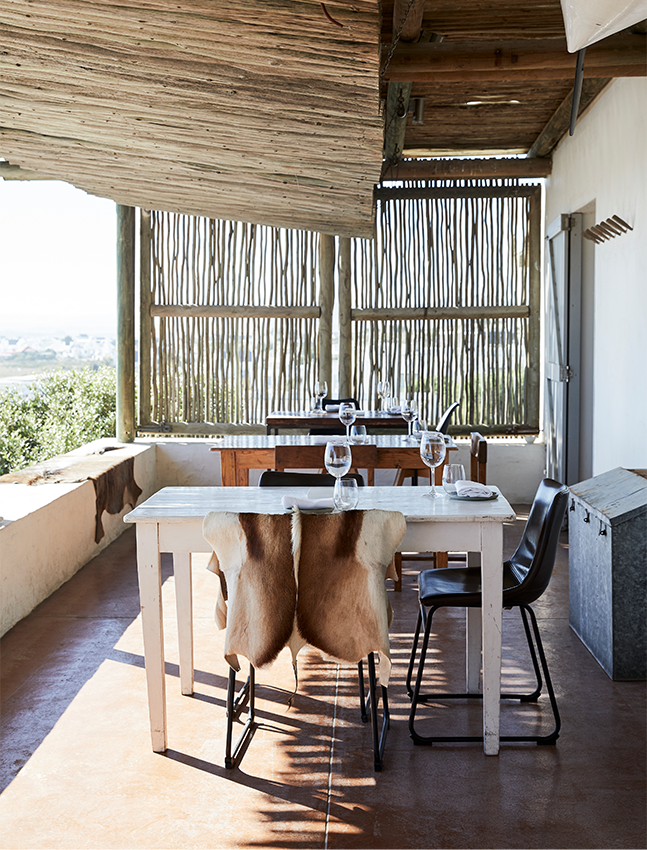


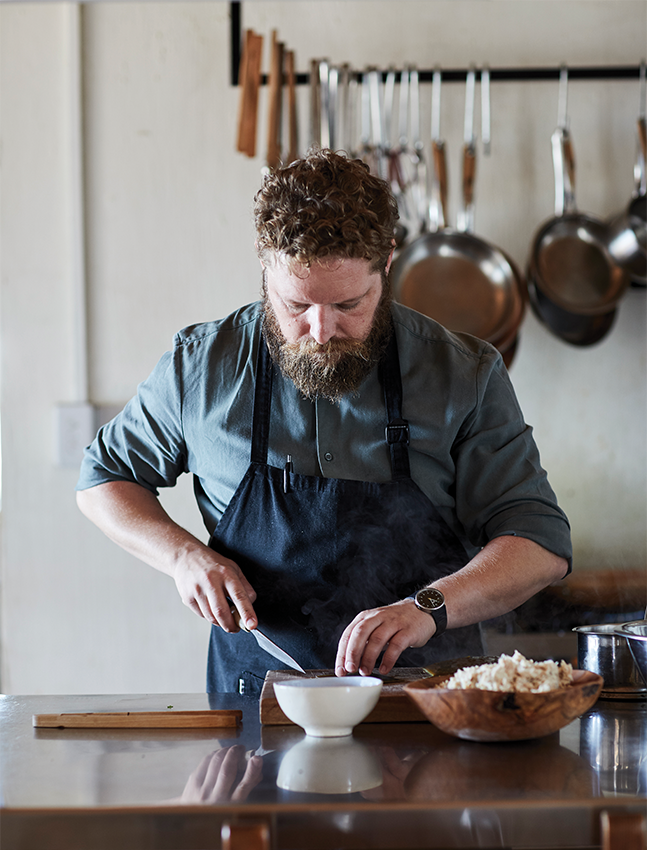

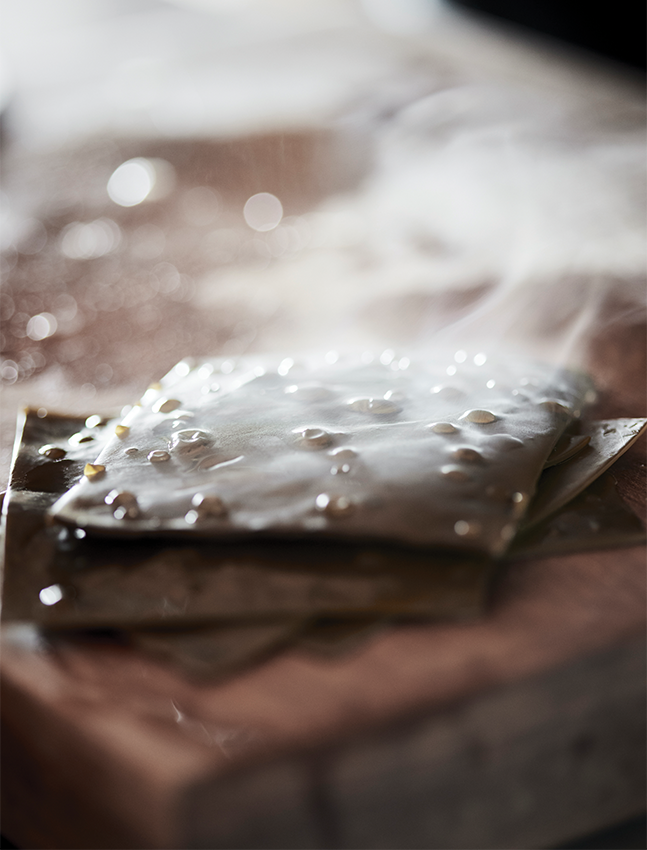
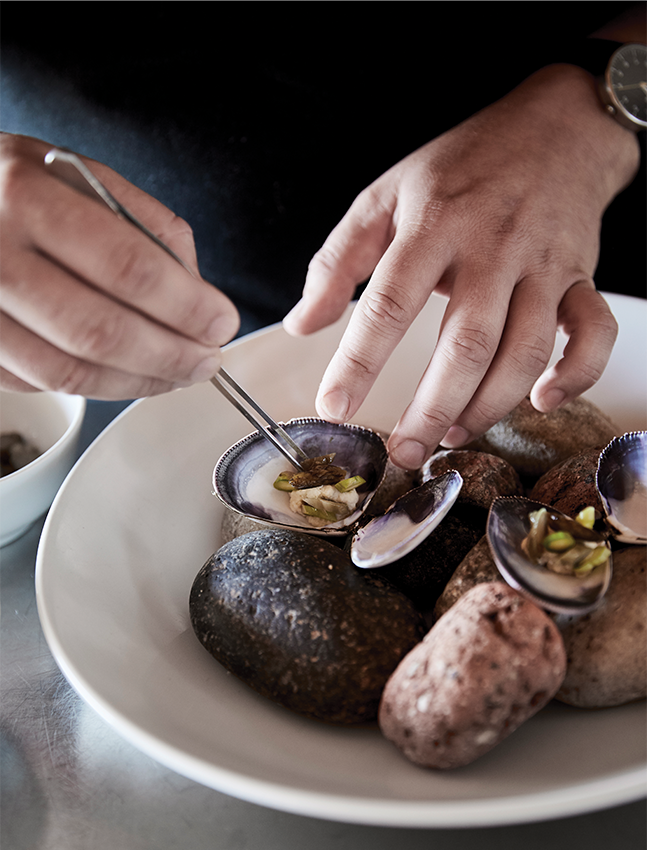

Wolfgat

Güney Afrika’nın batı kıyısındaki en eski balıkçı köylerinden biri olan Paternoster’de gün ağarmaya başladı. İsminin kökeni tam olarak bilinmese de Latince’de “Babamız” anlamına gelen Paternoster’in, Katolik Portekizli denizcilerin karaya oturduklarında ettikleri duaları ifade ettiğine inanılıyor.
Tarih boyunca sayısız denizcilik serüvenine şahitlik etmiş bu bölgede, daha sessiz daha yaratıcı bir yaşam kurmak için şehirden ayrılan ünlü Şef Kobus van der Merwe, Atlantik Okyanusu’nun saniyeler sonra sileceği ayak izlerini kumsala bırakarak ilerliyor. Benzersiz restoranı Wolfgat için malzeme avına çıkan Şef, pazara ya da dükkanlara değil sonsuz maviliğin kıyılarına yöneliyor. Hava açık olsa da ısırıyor ve güneşin ilk ışıkları, suyun üstünden hareketli dansıyla yüzüne yansımaya başladı. Şef ayakkabılarını kumsala bırakıp, sırtına bir balık sepeti bağlayarak kayalıklara doğru ilerliyor. Zaman kaybetmeden aradığını bulup sepetine attı bile! Yerel dilde “kaya battaniyesi” anlamına gelen bir demet deniz yosunu. Sepetindeki yosunlar, küçük restoranını bir hafta idare etmeye yeter. Şef toplayıcılığın temel kuralına hakim; o da ihtiyacından fazlasını almamak! Toplanan deniz yosunu yalnızca durulanarak okyanusun tazeliğini hatırlatan tadıyla o gün çeşitli garnitürlere hayat verecek.
Wolfgat küçük ve sade bir restoran olsa da; Şubat ayındaki Dünya Restoran Ödülleri’nde “Yılın Restoranı” ve “Harita Dışı En İyi Destinasyon” seçildiğinden beri dünya çapında en iyiyi arayan yemekseverlerin radarına girmeye başladı. Artık tadım menüsü için aylar öncesinden rezervasyonlar yapılıyor.
Şef Kobus, restoranına ve kendisine gösterilen ilgiden memnun olmasına rağmen bunun biraz endişe verici olduğunu söylüyor ve ekliyor; “Bunun ne kadar önemli olduğunu önceden bilmiyorduk! Gerçekten büyük isimlerle karşı karşıyaydık. Burada masa örtülerimiz bile yok ve verdiğimiz hizmet çok rahat.” Tanınmaktan memnun olsa da, kendisinin ve kısıtlı sayıdaki personelinin çalışma şeklini değiştirmeye dair hiçbir planı yok. Şef, doğallığı sadece masada değil, restoranın tamamında yansıtmaktan ödün vermemeyi ilke edinmiş bir bakış açısına sahip. Başlangıcından itibaren beğeni toplayan restoran karakterini bu nedenle değiştirmeyeceğini belirtiyor.
Wolfgat’ı tanımlarken rahat, rustik ve mütevazı diyebiliriz. Ancak bu şirin restoran iddiali ve dikkatlice düşünülmüş dokunuşlara sahip. Geleneksel beyaz balıkçı kulübelerinden birinde yer alan bu restoran, altı masa ile maksimum 24 misafiri ağırlıyor.
Duvarlar bölgedeki çoğu yerde olduğu gibi beyaz sıvalı, misafirleri tüm doğallığıyla karşılayan yeşil ahşap ön kapısıysa sıcacık rengi ve yıpranmış dokusuyla içerideki doğal lezzetlerin sinyallerini veriyor! Küçük ve iyi donatılmış bir mutfağa sahip olan restoranın, ahşap ve çelik karışımı mobilyaları kendiliğinden çarpıcı.
Wolfgat’ın kıyıda konumlanmasının bir sonucu olarak sepetlerdeki deniz kabukları, bulunan küçük hayvanların kafataslarından oluşan bir koleksiyon ve Şef Kobus’un botanik infüzyonları restoranı benzersiz kılan noktalardan birkaçı. Havanın açık olduğu günlerde konuklar okyanusun muhteşem manzarasına sahip verandada yemeklerinin keyfini çıkarırken; geceleri ve soğuk günlerde, şef ve ekibi masaları içeriye taşıyor, şöminede ateş yakarak misafirlerine açık mutfak deneyimi yaşatıyorlar. Şef Kobus’un mutfağından çıkan lezzetler tadılırken restoran isminin hikayesine dönelim. Yamaçtan birkaç adım aşağıda, binlerce yıl önce yerel halklar tarafından kullanıldığına inanılan ve restorana adını veren Wolfgat mağarası yer alıyor. Wolfgat; “kurt deliği” veya “mağara” anlamına geliyor; işte Wolfgat’ın ilham noktası, bu arkeolojik ve jeolojik öneme sahip araziden. Mağaranın ilk arkeolojik araştırması son 2000 yıldan günümüze sayısız seramik kalıntılarını ve koyun kemiklerini ortaya çıkardı. Yerel efsanelere göre altında birçok yeraltı geçidi olduğu söyleniyor. Ödüllü mutfaklara sahip restoranların aksine, buradaki atmosfer sakin ve telaşsız bir hızda. Mevsimlerle ve doğal işleyişiyle tamamen uyumlu bir dünya yaratılmış. Menüde et (yerel geyik eti ve kuzu eti) doğru mevsimi olan sonbaharda ve kışın servis edilirken, yaz aylarında odak noktası sürdürülebilir kaynaklı deniz ürünlerine kayıyor.
Restoranın tatlılarına gelince; her birinin sunulmadan önce arka planda yaşanan farklı bir hikayesi var. Mevsimsel menüye sahip olmanın bir sonucu olarak, her yeni gün sürprizlere hazırlıklı olmalısınız. Örneğin; başlangıç tatlısı olarak servis edilen ve yerel bir bitki olan deniz balkabağının (seepampoen) tükendiği farkedilse de ekibinden biri yolun hemen aşağısındaki evinin bahçesini süsleyen bu bitkiden bir demet getirebiliyor.Kobus; “Onu kullanmak çok mantıklı çünkü ücretsiz, sürdürülebilir, burada büyüyor ve buraya ait.” diyor. Aynı şey aslında Wolfgat’ın hikayesi için de geçerli...
Doğanın cömertlikle sunduğu, mevsiminde yetişen ve toplanan tüm güzellikler, bu kendi kendine yetebilen sade restoranın mutfağında hayat buluyor ve Wolfgat; bulunduğu gösterişten uzak köyden tüm dünyaya kulaktan kulağa yayılarak misafirlerini büyülemeye devam ediyor.
Wolfgat | from volume 16
words: Emre Ergenekon
photography: Warren Heath
